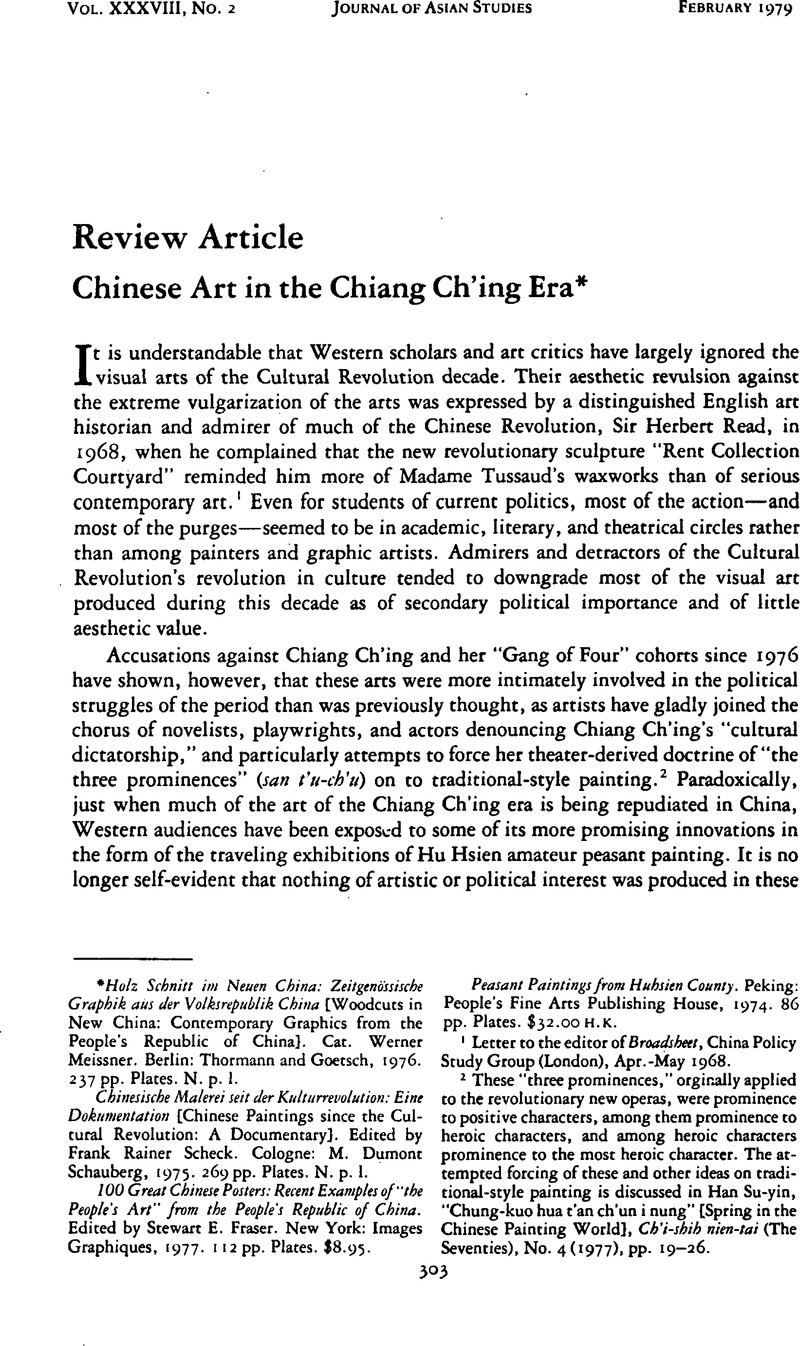Article contents
Chinese Art in the Chiang Ch'ing Era*
Published online by Cambridge University Press: 23 March 2011
Abstract

- Type
- Review Articles
- Information
- Copyright
- Copyright © The Association for Asian Studies, Inc. 1979
References
1 Letter to the editor of Broadsheet, China Policy Study Group (London), Apr.-May 1968.
2 These “three prominences,” orginally applied to the revolutionary new operas, were prominence to positive characters, among them prominence to heroic characters, and among heroic characters prominence to the most heroic character. The attempted forcing of these and other ideas on traditional-style painting is discussed in Han Su-yin, “Chung-kuo hua t'an ch'un i nung” [Spring in the Chinese Painting World], Ch'i-shih nien-tai (The Seventies), No. 4 (1977), pp. 19–26.
3 The two standard English language works on painting in the People's Republic are Sullivan, Michael, Chinese Art in the Twentieth Century (Berkeley: Univ. of California Press, 1959)Google Scholar; and Hajek, Lubor, Contemporary Chinese Painting (London: Spring Books, 1961). Neither deals with anything after the mid-1950s.Google Scholar
4 It is both more comprehensive and more upto-date than the relevant sections of Croizier, Ralph, ed., China's Cultural Legacy and Communism (New York: Praeger, 1970). Moreover, this book, as is Sullivan and Hajek, is now out of print.Google Scholar
5 Fraser, Stewart E., ed., 100 Great Chinese Posters (New York: Images Graphiques, 1977), p. 6.Google Scholar
6 Luan, Hsiao, “Tou-cheng shih-tai te hua” [Paintings of an Age of Struggle], Jen-min jih-pao [People's Daily], November 26, 1974.Google Scholar
7 This is based on Han Su-yin's early 1977 interview with Li K'o-jan in Peking, Ch'i-shih nien-tai [The Seventies], No. 4 (1977), pp. 19–20, and was confirmed in conversations with a group of visiting American art historians in the summer of 1977.
8 Hsün, Lu, author, Ch'eng Shih-fa, illustrator, Ah Q cheng ch'uan i ling pa t'u [One Hundred and Eight Illustrations of the True Story of Ah Q] (rept. Hong Kong, Nan T'ung T'u Shu Kung Sse, 1973).Google Scholar
9 Chih-tien, Chao, “I Painted the Heroic Taching Oil Workers,” Chinese Literature, No. 9 (1974), p. 106.Google Scholar For a similar story concerning the appearance of young militia women in a fishing village see “Thoughts on Woodcut Alt,” Chinese Literature, No. 8 (1972), pp. 108–109.Google Scholar
10 See “New Paintings in Huhsien County,” Chinese Literature, No. 1 (1977), pp. 106–107.
- 1
- Cited by


